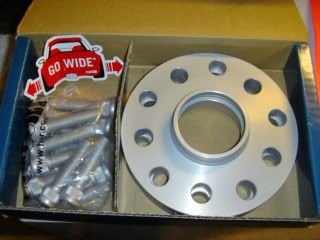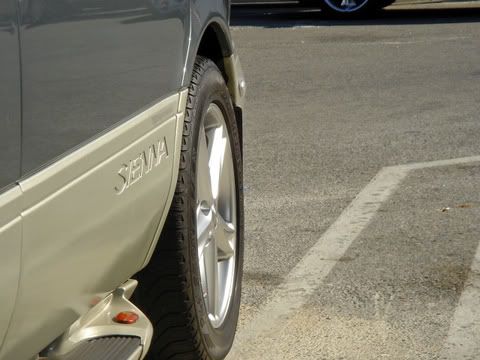The spacers for the front were installed yesterday.
Raise the vehicle and use a jack stand. Remove the wheel/tire, brake caliper ( and secure/support it), caliper bracket (59 ft-lbs), pads and the rotor.
I did not remove the hubs. No way I can turn the drive shaft/axle (30mm) nut, which is factory torque at 217 ft-lbs. With this amount of torque on the nut, a couple of hammer strikes on the studs is probably safe and not disturb the bearing. As an insurance, I inserted a screwdriver in the back, between the hub and the body of the steering knuckle before I hit the stud with a hammer.


After the OEM studs are hammered out, remove them from the hub by rotating the hub (tranny is set to Neutral - parking brake is engaged and rear tires are blocked) until it reaches a semi-circle cutout in the dust plate. After you remove the OEM studs, insert a new one in its place.


If you have old lug nuts, use them to tighten the new studs and mimic a pressing process. Use a deep socket and torque wrench set at 79 ft-lbs (lug nut torque specs on my Sienna) as a precaution not to force or create an over tightening scenario that can shear the new studs. A clicker type (1/2"drive) torque wrench is perfect for this task; I bought a cheap one from Harbor Freight for $20. Put the tranny in PARK; engage the floor jack rod against the hub to prevent it from moving. Start tightening the lug nuts. If you feel it getting hard to turn or the clicker/set torque is reached, go to the next nut and come back to that lug nut later.


After you had tighten them all and the stud counter head is evenly seated to the hub, test fit the spacer.


Reinstall rotor, caliper bracket, caliper and pads (I decided to change pads and new shim kit) and wheel/tire. I test fitted the Motegi wheel and it's perfect, enough clearance between the tire and strut. I can't use then yet, the hub rings did not arrive in time.


























